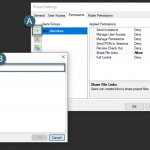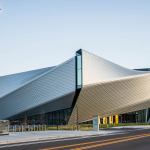Revit Rendering in the Cloud
A picture is worth 1,000 words, so let your design speak for itself. For most, a Revit drawing may be hard to visualize with the mind’s eye so take the guesswork out of the equation by translating your work into a 3D-view rendering. Doing so will ensure clients and stakeholders are able to interpret the space as intended.
Main areas of consideration when developing a rendering include:
- The model is closed – floors, doors, walls, etc. are placed properly
- Lights are placed – both daylight and practical lighting
- Materials are selected to define the surfaces within a project
Before rendering in the cloud, it is best to do so locally on your machine. When determining the quality of your rendering consider the render’s purpose.
- For design verification or rendering iterations use simplified accuracy outputs (draft or medium quality)
- Utilize an advanced accuracy setting (high or custom quality) for final renders
Other items of consideration before processing: viewport size and camera/target location.
Once you have an acceptable render out of Revit on your computer, it is time to send it to the cloud. Check out this short video for more on this process >



